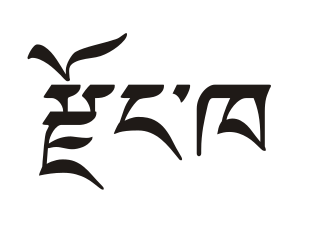
Chukha District is one of the 20 dzongkhag (districts) comprising Bhutan. The major town is Phuentsholing which is the gateway city along the sole road which connects India to western Bhutan. Chukha is the commercial and the financial capital of Bhutan. With Bhutan's oldest hydropower plant, Chukha hydel, and Tala Hydroelectricity Project, the country's largest power plant, Chukha is the dzongkhag which contributes the most to the GDP of the country. Also located in Chukha district are some of the country's oldest industrial companies like the Bhutan Carbide Chemical Limited (BCCL) and the Bhutan Boards Products Limited (BBPL).
Bara Gewog is a former gewog of Samtse District, Bhutan. The gewog has an area of 186 square kilometres and contains 474 households. Bara Gewog comprises part of Sipsu Dungkhag (sub-district), together with Tendu, Biru, Lehereni, and Sipsu Gewog Gewogs.
Biru Gewog is a former gewog of Samtse District, Bhutan. The gewog has an area of 49.04 square kilometres and contains 15 chewogs with 46 villages and 448 households. Biru Gewog comprises part of Sipsu Dungkhag (sub-district), together with Tendu, Bara, Lehereni, and Sipsu Gewogs.
Chargharey Gewog is a former gewog of Samtse District, Bhutan. Chargharey Gewog, together with Chengmari Gewog, comprises part of Chengmari Dungkhag (sub-district).
Dorokha Gewog is a former gewog of Samtse District, Bhutan. Dorokha Gewog is part of Dorokha Dungkhag (sub-district), together with Dorokha and Denchukha Gewogs.

Dungtoe Gewog is a gewog of Samtse District, Bhutan. Dungtoe Gewog is part of Dorokha Dungkhag (sub-district), together with Dorokha and Denchukha Gewogs.

Samtse Gewog is a gewog of Samtse District, Bhutan.

Tading Gewog is a gewog of Samtse District, Bhutan.

Tendruk Gewog is a gewog of Samtse District, Bhutan. Tendu Gewog comprises part of Sipsu Dungkhag (sub-district), together with Bara, Biru, Lehereni, and Sipsu Gewogs.

Ugentse Gewog is a gewog of Samtse District, Bhutan.

Yoeseltse Gewog is a gewog of Samtse District, Bhutan.

Dophoogchen Gewog is a gewog of Samtse District, Bhutan.

Denchukha Gewog is a gewog of Samtse District, Bhutan.

Namgaychhoeling Gewog is a gewog of Samtse District, Bhutan.

Norgaygang Gewog is a gewog of Samtse District, Bhutan.

Pemaling Gewog is a gewog of Samtse District, Bhutan.

Phuentshogpelri Gewog is a gewog of Samtse District, Bhutan.

Sangngagchhoeling Gewog is a gewog of Samtse District, Bhutan.

Tashicholing Gewog is a gewog of Samtse District, Bhutan.The name of the gewog is also spelled as Tashichholing and formerly known as Sipsu Gewog or Sibsoo.




